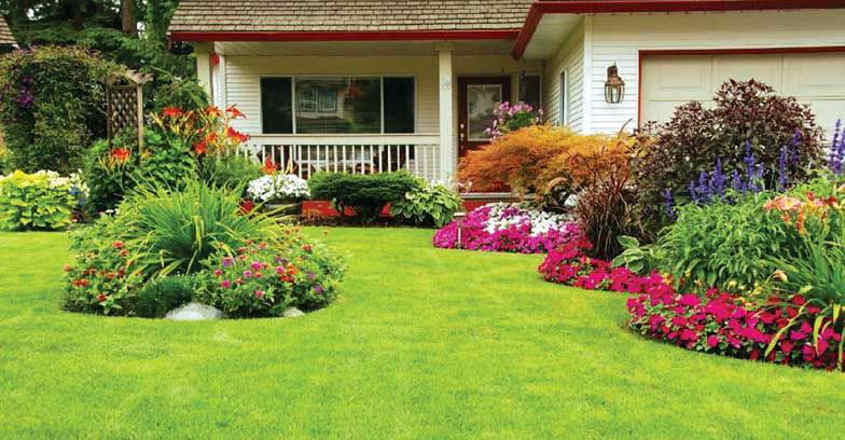Introduction: The allure of nature is timeless, and in an increasingly urbanized world, the desire to bring the outdoors into our living spaces has grown. This article delves into the multifaceted world of incorporating plants into home decor. Beyond aesthetics, we explore the numerous benefits, the art of choosing the right plants, creative placement strategies, engaging DIY projects, and essential care tips to create a harmonious blend of nature and home.
Section 1: The Benefits of Indoor Plants
1.1 Enhancing Aesthetics: Plants are not just green accessories; they are living elements that add a touch of natural beauty to any space. Their varied shapes, sizes, and textures contribute to a visually appealing decor palette. Whether it’s the vibrant green leaves of a tropical plant or the delicate blossoms of a flowering plant, each adds its unique charm.
1.2 Improving Air Quality: Indoor plants are nature’s air purifiers. They filter out pollutants, release oxygen, and contribute to a healthier indoor environment. Certain plants, such as snake plants and spider plants, are particularly effective in removing toxins like formaldehyde and benzene, ensuring the air you breathe is fresher and cleaner.
1.3 Boosting Mood and Productivity: The positive impact of plants extends beyond aesthetics and air quality. Studies suggest that the presence of indoor plants can elevate mood, reduce stress, and enhance cognitive function. Increased oxygen levels contribute to a more positive and productive living environment, making your home not just visually pleasing but emotionally uplifting.
Section 2: Choosing the Right Plants
2.1 Consider Your Space: The key to successful plant incorporation is understanding your living space. Assess the amount of natural light each room receives and the available space for plants. Choose plants that thrive in the specific conditions of each room, whether it’s the well-lit living room or the low-light bathroom.
2.2 Low-Maintenance Options: For those with busy schedules or limited gardening experience, opt for low-maintenance plants. Succulents, pothos, and ZZ plants are excellent choices. These resilient plants require minimal attention and still bring the benefits of greenery into your home.
2.3 Introducing Variety: Diversity in plant selection adds visual interest and caters to different aesthetic preferences. Experiment with a variety of plant types, including flowering plants, foliage plants, and cascading vines. The combination of textures and colors contributes to a dynamic and visually appealing indoor landscape.
Section 3: Creative Plant Placement
3.1 Statement Plants as Focal Points: Consider using larger, more distinctive plants as focal points in your decor. A towering fiddle leaf fig or a lush monstera can become a statement piece, anchoring the room and adding a touch of drama. Place them in stylish pots to enhance their visual impact.
3.2 Hanging Gardens and Vertical Displays: Maximize space by incorporating hanging planters or creating vertical gardens. Hanging planters not only add a dynamic element to the decor but also utilize vertical space effectively. Vertical gardens, whether on walls or hanging shelves, turn unused spaces into thriving green displays.
3.3 Incorporating Plants into Existing Decor: Integrate plants seamlessly into your existing decor by placing them on shelves, side tables, or windowsills. Choose decorative pots or planters that complement your decor style. Plants can complement other decor elements, such as artwork or decorative objects, creating a cohesive look.
Section 4: DIY Plant Decor Projects
4.1 Terrariums and Mini Gardens: Create miniature ecosystems within glass containers with terrariums. These enchanting displays often feature succulents, moss, and decorative rocks. Terrariums not only add a touch of whimsy but also allow you to experiment with different plant combinations.
4.2 Macramé Plant Hangers: Elevate your plant game with handmade macramé hangers. These DIY hangers not only showcase your plants in a unique way but also add a bohemian touch to your decor. Experiment with different knot patterns and lengths to create a personalized look.
4.3 Repurposed Planters: Upcycle old containers or furniture into planters for an eco-friendly touch. Vintage teacups, wooden crates, or even old boots can become charming homes for your plants. Repurposing not only adds character to your decor but also promotes sustainability.
Section 5: Plant Care Tips
5.1 Understanding Light Requirements: Different plants have varying light preferences. Place sun-loving plants near windows and low-light plants in shaded areas. Understanding the light requirements of your plants ensures they thrive and maintain their health and vitality.
5.2 Balancing Watering Needs: Avoid overwatering by letting the soil dry out between waterings. Each plant type has specific watering needs, so tailor your watering routine accordingly. Consistent and appropriate watering is key to the well-being of your indoor garden.
5.3 Regular Pruning and Maintenance: Prune plants to encourage healthy growth and maintain their shape. Regularly dust leaves to ensure optimal photosynthesis. By keeping your plants well-maintained, you not only enhance their visual appeal but also contribute to their overall health and longevity.
Conclusion:
Incorporating plants into your home decor is more than a design choice; it is a lifestyle decision that brings numerous benefits to your physical and mental well-being. By carefully selecting plants that suit your space, experimenting with creative placement, engaging in DIY plant decor projects, and providing proper care, you can transform your living spaces into green sanctuaries. Whether you live in a sprawling house or a cozy apartment, the simple act of bringing the outdoors in through plants has the power to enhance your home and enrich your daily life. Embrace the green revolution and let nature thrive within the walls of your home.


0 comments